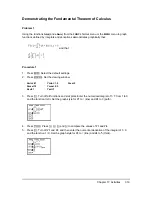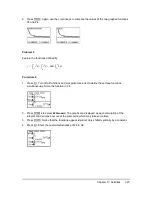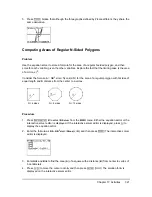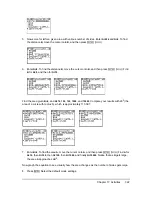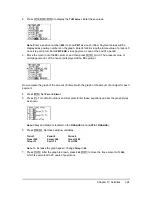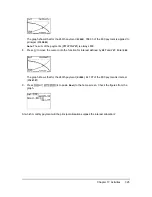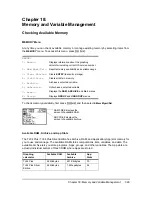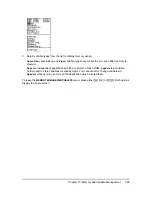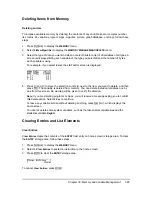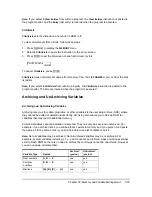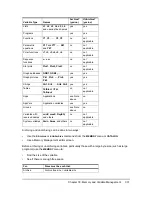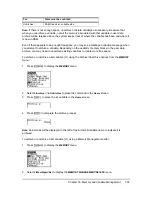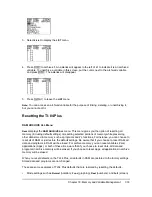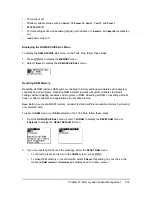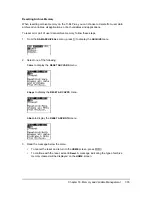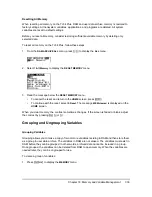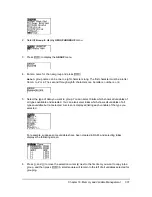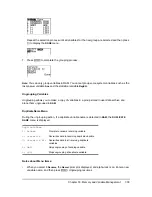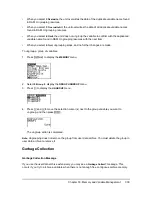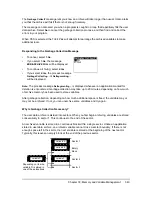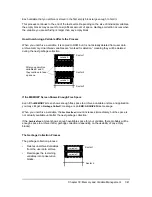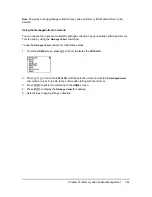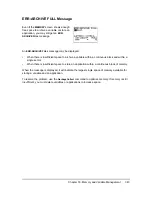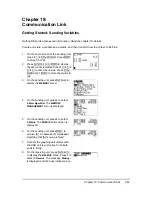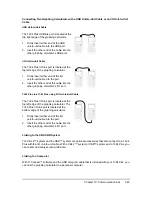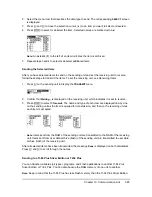
Chapter 18: Memory and Variable Management
333
3. Select
4:List
to display the
LIST
menu.
4. Press
Í
to archive
L1
. An asterisk will appear to the left of
L1
to indicate it is an archived
variable. To unarchive a variable in this screen, put the cursor next to the archived variable
and press
Í
. The asterisk will disappear.
5. Press
y 5
to leave the
LIST
menu.
Note:
You can access an archived variable for the purpose of linking, deleting, or unarchiving it,
but you cannot edit it.
Resetting the TI-84 Plus
RAM ARCHIVE ALL Menu
Reset
displays the
RAM ARCHIVE ALL
menu. This menu gives you the option of resetting all
memory (including default settings) or resetting selected portions of memory while preserving
other data stored in memory, such as programs and
Y=
functions. For instance, you can choose to
reset all of RAM or just restore the default settings. Be aware that if you choose to reset RAM, all
data and programs in RAM will be erased. For archive memory, you can reset variables (Vars),
applications (Apps), or both of these. Be aware that if you choose to reset Vars, all data and
programs in archive memory will be erased. If you choose to reset Apps, all applications in archive
memory will be erased.
When you reset defaults on the TI-84 Plus, all defaults in RAM are restored to the factory settings.
Stored data and programs are not changed.
These are some examples of TI-84 Plus defaults that are restored by resetting the defaults.
•
Mode settings such as
Normal
(notation);
Func
(graphing);
Real
(numbers); and
Full
(screen)

